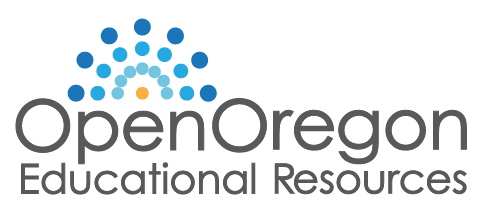This post was contributed by Mark Peterson, Learning Resource Center Director, Klamath Community College.
It is impossible to ignore the enormous impact Open Educational Resources (OERs) could have on both individual Klamath Community College (KCC) students and the campus culture as a whole.
A bit of background: KCC serves Klamath and Lake Counties, Oregon. According to the 2010 U.S. Census, the poverty rate for Klamath County as a whole is 23% (second highest in Oregon), with parts of the county experiencing poverty rates of more than 42%. Lake County fares only slightly better, with an average poverty rate of 20.1%. The State of Oregon has designated the region a “distressed area” based on unemployment rates, per capita income, average wages, level of employment diversification, and job loss. At KCC, 82% of students are eligible for Pell Grants, based on federal poverty level guidelines for income/family size.
Having seen firsthand how the high cost of textbooks damages students’ academic success as well as their quality of living, the KCC Bookstore has lent their full support to the OER model. It has been reported that the campus bookstore is being used as a kind of pawn shop, where expensive books are sold back for ready cash, only to be bought at marked-up prices the next term, over and over again. At least 60% of the bookstore’s yearly revenue is financial aid charges (the amount spent is deducted from the financial aid disbursements), so the actual amount paid for a textbook purchased multiple times over the course of a standard 10-year repayment plan is staggering.
Here is one example: A Writer’s Reference, which is used in WR 095, 121, 122, 123, and 227, retails new for $85.75 or used for $64.25 at the KCC Bookstore. We estimate that this term 467 students enrolled in writing courses that assign this book, which could cost a student as much as $442.00 by the time they have paid off their student loans if they resell it every term. If all of these students went on to take another writing course after selling the textbook, they would collectively spend hundreds of thousands of dollars on this textbook alone. Replacing just this one textbook could save KCC students as much as $40,000 per term.
KCC faculty have displayed overwhelming enthusiasm for OERs and other alternatives to traditional course materials as well, due to frustration with the high cost and use restrictions of print textbooks. Library Director Mark Peterson and librarian Robin Jeffrey are assisting the faculty with course redesign, including locating and reviewing OERs and other alternative course materials. A pilot to begin replacing print textbooks with no- or low-cost OERs for English, business, writing, and art classes this summer and fall is projected to realize cost savings to students of between $10,000-$12,000, with the potential for over $70,000 in savings if all sections make the switch.
- WR 095, 121, 122, 123 & 227 A Writer’s Reference ($85.75), is being replaced in selected sections with open source materials such as those found on Writing Commons, plus a course packet. (Spring Term 2015 enrollment: 467 students)
- WRI 122, Elements of Argument ($79.12), is being replaced with materials created by instructors, open source materials, and sample essays analogous to those in the textbook which are either in the public domain or available through library databases. (Spring Term 2015 enrollment: 57 students)
- ART 206, 212 Gardner’s Art Through The Ages Vol I ($270.00) and Snyder’s Medieval Art ($186.75) will be replaced by having instructors utilize the college’s subscription to ArtStor, and materials found in open source repositories such as Saylor. (Spring Term 2015 enrollment: 54 students)
- Business 206 Principles of Management ($53.97) will be replaced by instructor-created content and open source materials such as those found on Saylor. (Spring Term 2015 enrollment: 35 students)
